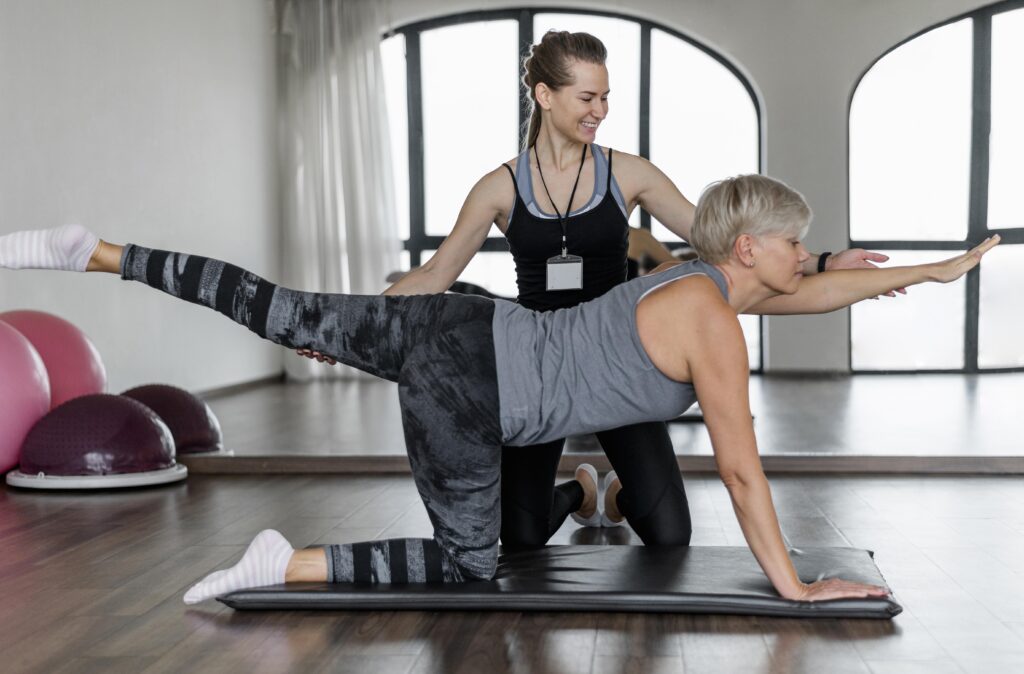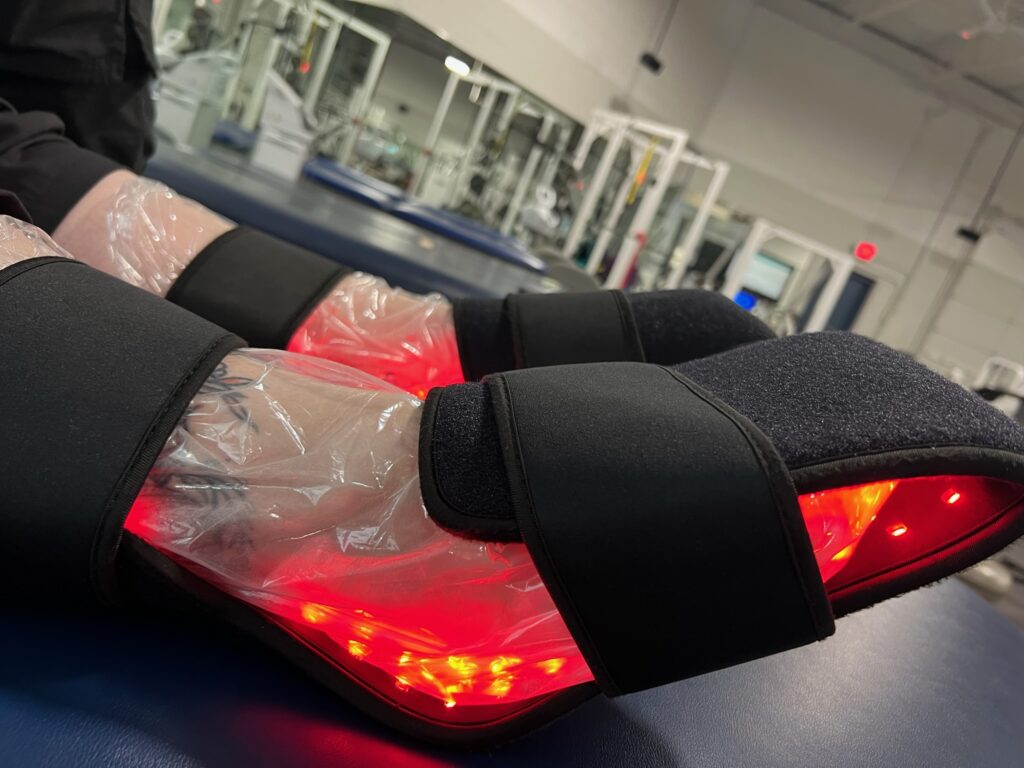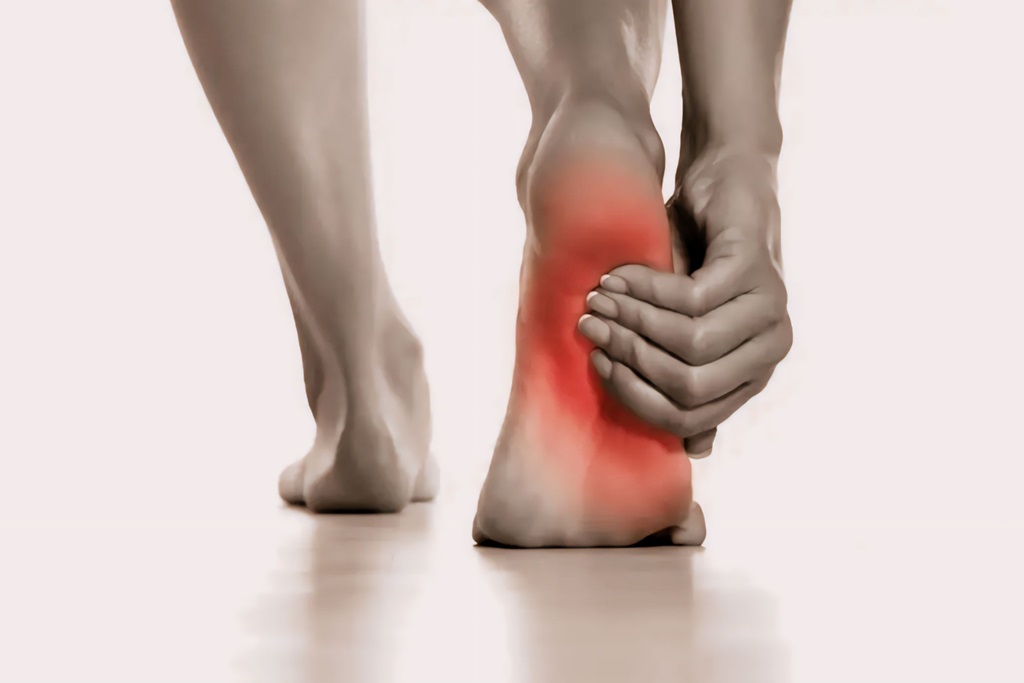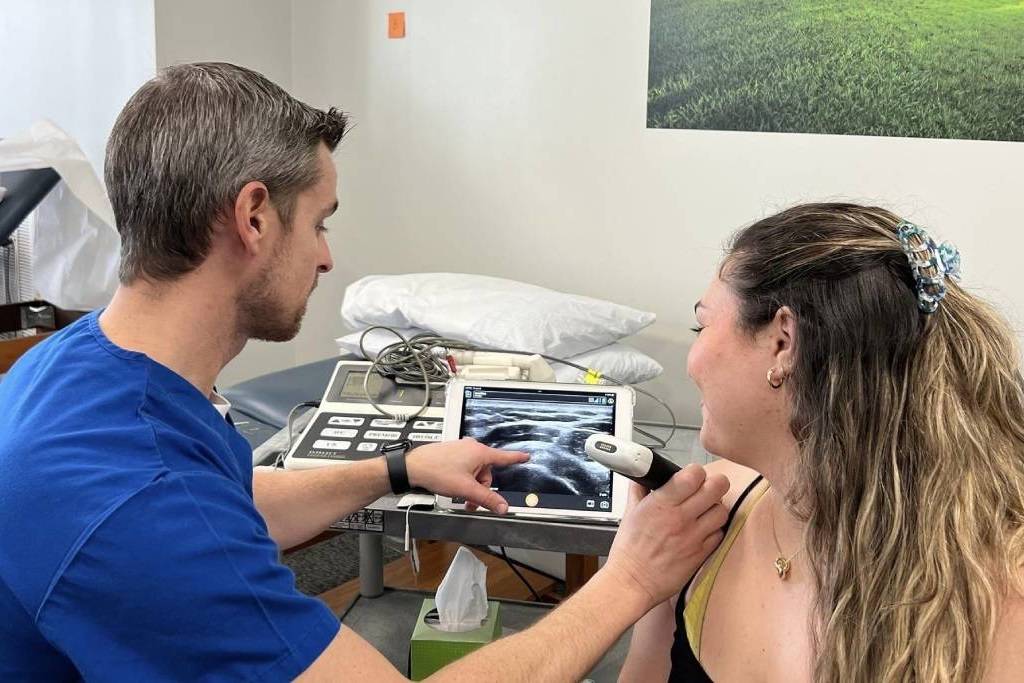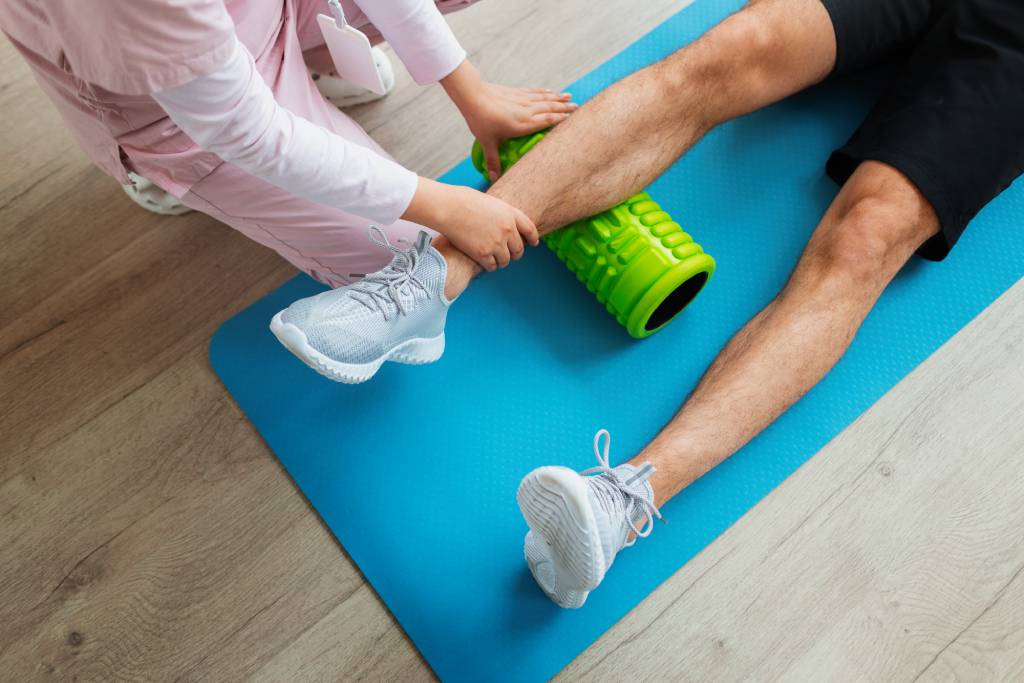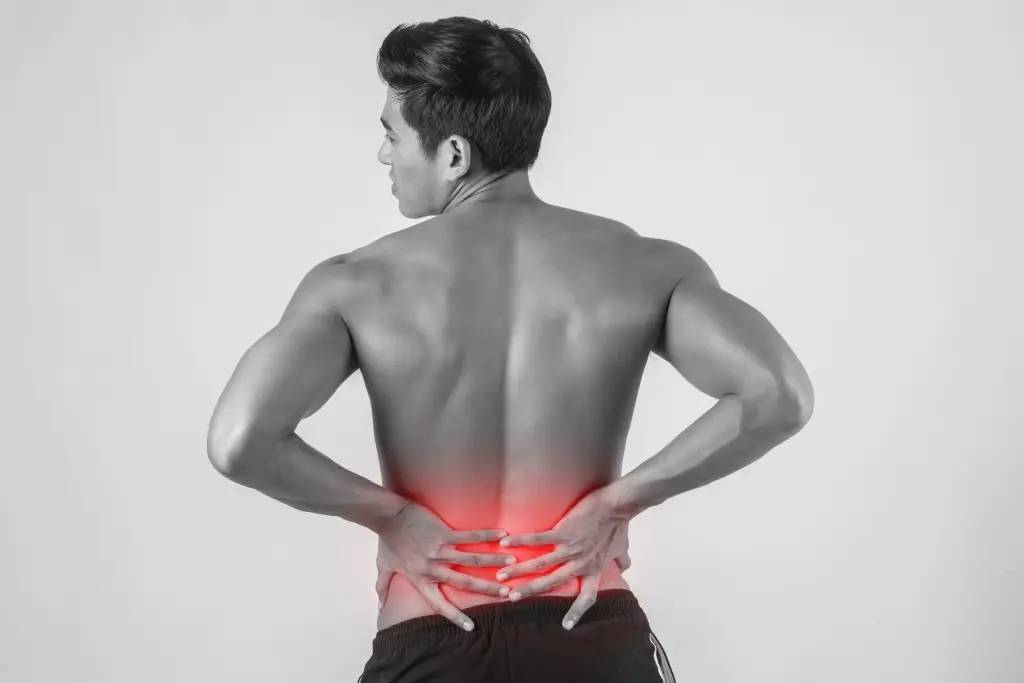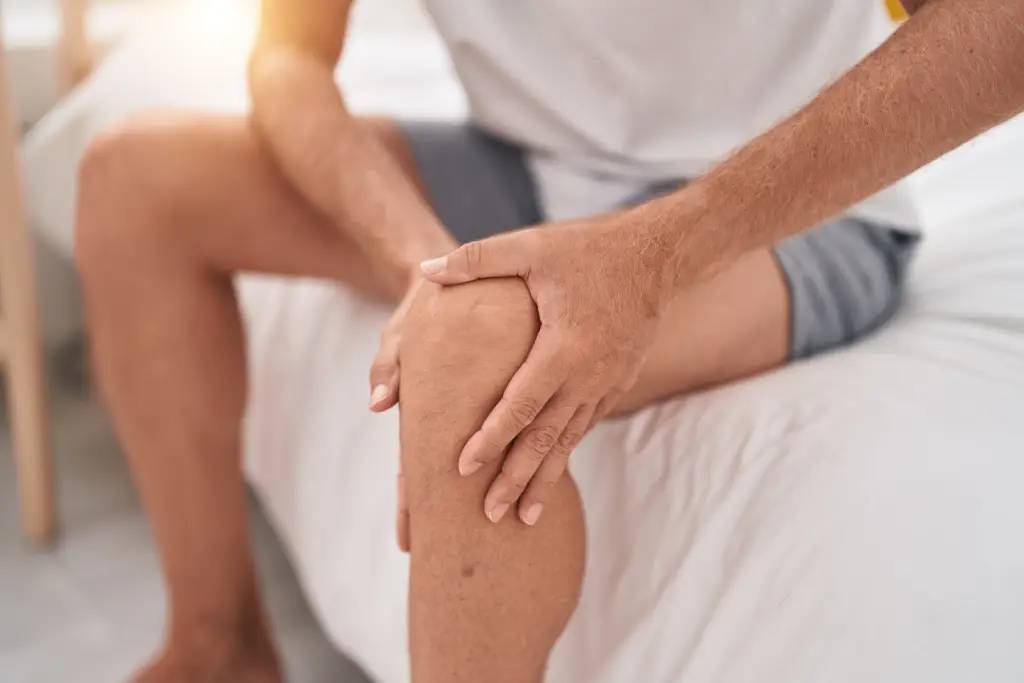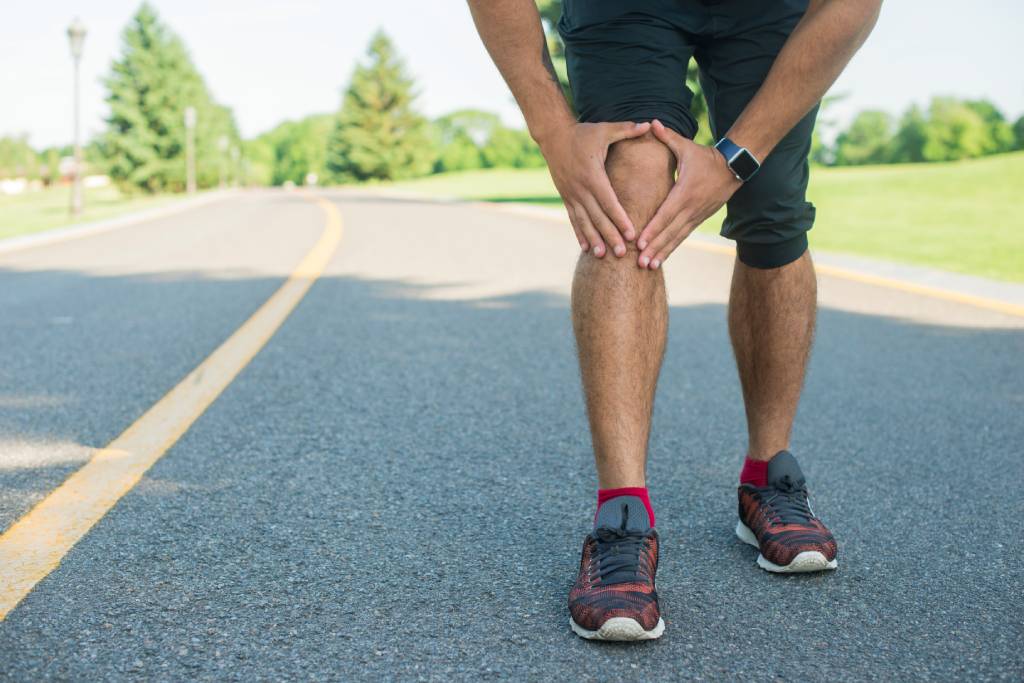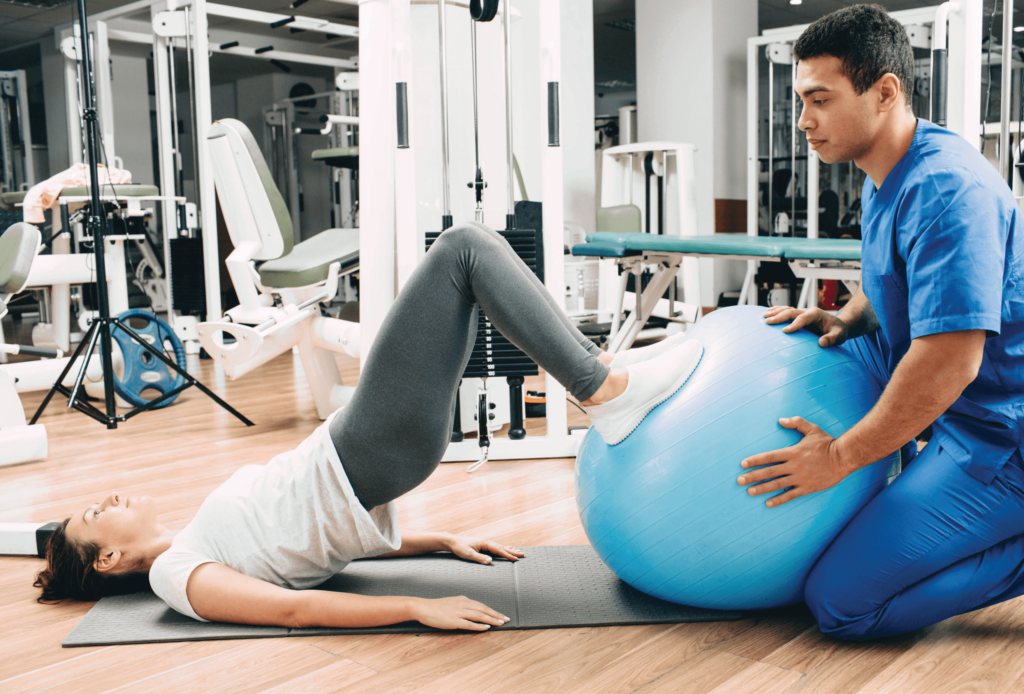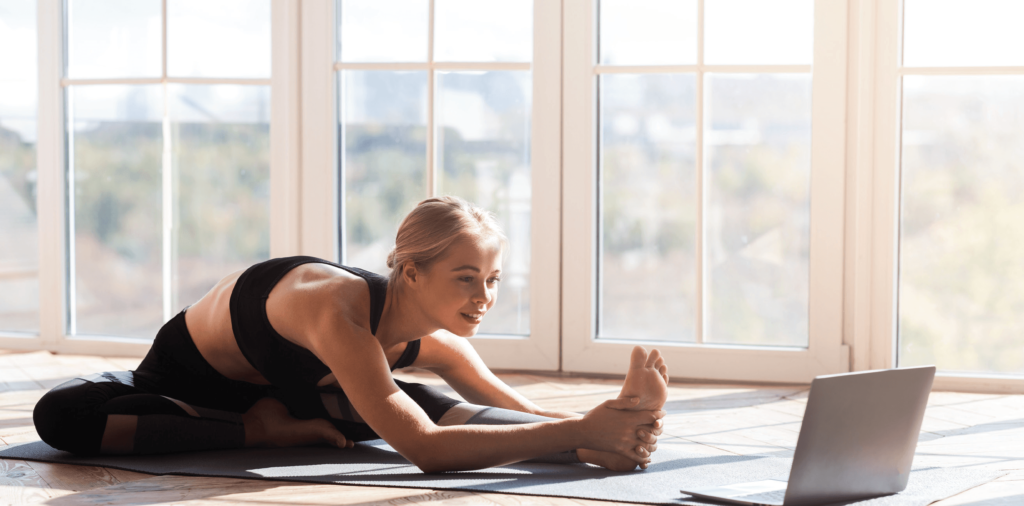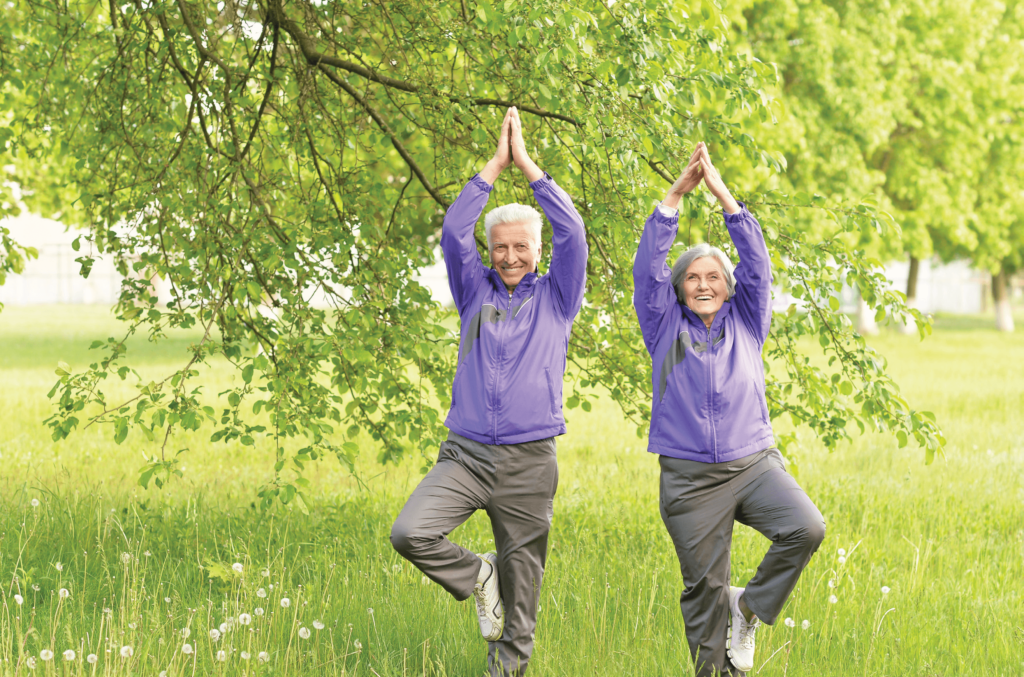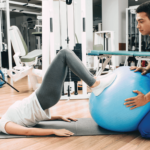How to Fix Bad Posture: Mastering Good Posture with Practical Steps

Do you find yourself slouching frequently, especially after long hours at work or school? In this era of virtual learning and remote work, our constant use of smartphones, tablets, and computers often puts our necks and backs in positions of prolonged stress. Over time, bad posture can result in increased stress on our vertebrae, discs, and supporting muscles, leading to aches, pains, numbness, and stiffness.
If you or your child are sitting at a desk for extended periods, it’s crucial to ensure your posture is in check. Poor posture can have detrimental effects, but the good news is that it’s not a life sentence. With the assistance of physical therapy, you can not only improve your posture but also lead a pain-free, active life. Contact Panetta Physical Therapy today to discover how to fix bad posture.
What Causes Bad Posture
Posture changes happen gradually, often unnoticed until aches and pains arise. Our focus on tasks can cause us to forget about our body positioning. Even if you’re diligent about exercise, weak muscles might be contributing to bad posture.
Poor posture isn’t a sign of laziness; rather, it often stems from physical weakness. When we slouch, our bodies get tired of holding us up. This leads to excessive strain on joints, muscles, tendons, and ligaments, weakening core muscles crucial for maintaining an upright and healthy posture.
Common Posture Problems
Recognizing and understanding common posture issues is pivotal for maintaining optimal musculoskeletal health. Issues such as forward head posture, rounded shoulders, and excessive lumbar curve can have profound implications, leading to specific musculoskeletal problems that range from neck pain to lower back discomfort.
Forward Head Posture:
This occurs when the head juts forward, misaligning with the natural curve of the spine.
Impact: Forward head posture places excessive strain on the neck and upper spine, leading to chronic neck pain, headaches, and potential issues with the cervical spine.
Rounded Shoulders:
Rounded shoulders involve the shoulders slumping forward, creating a hunched appearance.
Impact: This bad posture can contribute to shoulder impingement, rotator cuff injuries, and chronic upper back pain. Over time, it may affect shoulder mobility and increase the risk of injury.
Excessive Lumbar Curve:
Also known as hyperlordosis, this issue is characterized by an exaggerated inward curve of the lower spine.
Impact: Excessive lumbar curve can strain the lower back muscles and lead to conditions such as lower back pain, muscle spasms, and increased pressure on the intervertebral discs.
Kyphosis:
Kyphosis is an excessive rounding of the upper back, creating a hunchback appearance.
Impact: This posture problem can result in thoracic spine pain, limited mobility, and increased vulnerability to fractures. It often contributes to a compromised respiratory function.
Swayback Posture:
Swayback involves an exaggerated curve of the spine, creating a bad posture where the pelvis shifts forward.
Impact: Swayback can lead to issues such as lower back pain, hip discomfort, and increased pressure on the lumbar spine. It may also affect gait and overall stability.
Proven Tips to Improve Posture
Exercise alone might not be sufficient if weak muscles contribute to poor posture. Ensure your desk chair and computer are at the proper height to avoid slouching. For children, appropriately sized furniture can promote good posture. Adjust your monitor to eye level, keep the keyboard close, sit upright with feet flat on the floor, and avoid crossing your legs. A chair with strong back support and padding enhances your upright position.
These simple adjustments can significantly improve your overall posture.
Additional Tips for Better Posture
- Mindful Sitting: Be aware of your sitting habits. Sit all the way back in your chair with your back straight and shoulders relaxed. Distribute your body weight evenly on both hips.
- Frequent Breaks: Take short breaks during prolonged periods of sitting. Stand up, stretch, and walk around to prevent stiffness and muscle tension.
- Ergonomic Workspace: Arrange your workspace ergonomically. Position your computer monitor at eye level, keep the keyboard and mouse close, and ensure your chair supports the natural curve of your spine.
- Correct Driving Posture: When driving, adjust your car seat so your knees are level with your hips. Use a back support cushion if needed, and avoid leaning forward.
- Mindful Phone Use: Hold your phone at eye level to prevent excessive tilting of the head. Avoid cradling the phone between your ear and shoulder for extended periods.
- Proper Lifting Techniques: When lifting objects, bend at the knees and hips, not the waist. Keep the object close to your body, and use your leg muscles to lift.
- Comfortable Mattress and Pillows: Invest in a mattress and pillows that provide adequate support for your neck and spine while sleeping.
- Regular Stretching: Incorporate gentle stretching into your routine. Focus on the neck, shoulders, and back to release tension and improve flexibility.
- Maintain a Healthy Weight: Extra weight, especially around the midsection, can strain the lower back and contribute to bad posture. Maintain a healthy weight through regular exercise and a balanced diet.
- Stay Hydrated: Proper hydration supports the elasticity of intervertebral discs, which play a role in maintaining spinal alignment.
Tips for Improving Posture for Seniors, Adults and Children
Seniors: Prioritizing Mobility and Comfort
- Incorporate Gentle Exercises: Engage in exercises that promote flexibility and balance. Tai Chi, yoga, and swimming are excellent options for seniors to maintain mobility and support posture.
- Choose Supportive Furniture: Opt for furniture that provides ample support, especially for the lower back. Consider using pillows or cushions to maintain comfort and proper alignment while sitting.
- Regular Health Check-ups: Aging may bring about changes in musculoskeletal health. Regular check-ups with healthcare professionals can help address any issues promptly and ensure proactive posture management.
Adults: Balancing Work and Well-being
- Take Regular Breaks: In the hustle and bustle of work, it’s easy to forget about posture. Set reminders to take short breaks, stretch, and readjust your sitting position to prevent stiffness and muscle tension.
- Invest in Ergonomic Office Furniture: If you have a desk job, invest in ergonomic chairs and desks. Make sure your computer monitor is at eye level, and your chair supports the natural curve of your spine.
Children: Building a Strong Foundation
- Encourage Active Play: Foster activities that promote movement and physical strength. Engage children in sports, games, and outdoor play to develop strong muscles and support proper posture.
- Provide Ergonomic Furniture: Ensure that study desks and chairs are appropriately sized. Children should be able to sit with their feet flat on the floor and maintain a relaxed, upright posture while studying.
Adapting these age-specific tips into your lifestyle can significantly contribute to the overall well-being and posture health of individuals at every stage of life. Remember, the key is consistency and mindfulness. Paying attention to posture early in life establishes good habits, and continuing to prioritize it as you age helps maintain a strong and healthy musculoskeletal system.
Best Exercises to Improve Posture
Embarking on a journey to improve your posture involves more than mere awareness—it requires targeted exercises that strengthen key muscles and promote spinal alignment. These are good posture exercises, designed to address weak areas contributing to poor posture, and can be easily incorporated into your routine.
Bridge Exercise:
This is a good back strengthening exercise for posture, targeting core and glute muscles and aiding in stabilizing the spine.
- Lie on your back with knees bent and feet flat on the floor.
- Lift your hips toward the ceiling, creating a straight line from your shoulders to your knees.
- Hold for a few seconds, then lower back down.
- Repeat for 10-15 reps.
Planks:
Planks are great postural stability exercises: these engage the entire body, building strength to support an upright posture.
- Start in a push-up position with arms straight.
- Keep your body in a straight line from head to heels.
- Hold for 20-30 seconds, gradually increasing the time as you build strength.
Thoracic Extension:
Perfect upper back exercise for posture, countering the effects of hunching.
- Sit or stand with hands behind your head.
- Gently arch your upper back, looking up toward the ceiling.
- Hold for a few seconds, then return to the starting position.
- Repeat for 10-12 reps.
Chin Tucks:
These are useful exercises to correct forward head posture and relieve tension in the neck and upper back.
- Sit or stand with a straight spine.
- Gently tuck your chin to your chest, feeling a stretch in the back of your neck.
- Hold for 10-15 seconds and repeat.
Simple Posture Exercises You can do at Your Desk:
You can do these simple posture exercises at home, as they require minimal space and no specialized equipment. Whether you choose to integrate them into your morning routine or incorporate them into a home workout, consistency is key. As you build strength and flexibility, you’ll find yourself standing taller and experiencing less discomfort.
Ergonomics and Posture
In addition to targeted exercises, maintaining good posture extends to everyday activities. Beyond the workspace, consider the impact of ergonomics on your posture during daily scenarios such as reading, watching TV, and using electronic devices. Whether you’re immersed in a book, binge-watching your favorite show, or scrolling through your phone, adopting proper body positioning and maintaining an ergonomic posture is crucial. Here are some practical tips for ensuring good posture in various daily scenarios:
Reading: When reading, sit in a chair with proper back support so you keep an ergonomic sitting posture. Keep the book or tablet at eye level to prevent neck strain.
Watching TV: Maintain a comfortable distance from the TV screen, and use pillows or cushions to support your lower back.
Using Electronic Devices: Hold your phone or tablet at eye level to prevent excessive tilting of the head. Take breaks to avoid prolonged periods of looking down.
By incorporating these ergonomic practices into your daily life, you can reinforce the benefits gained from targeted exercises, contributing to an overall improvement in posture.
Posture and Sports Performance
The role of posture isn’t confined to our daily routines—it extends to our physical activities, especially in sports. Proper posture is integral to sports performance and injury prevention. Whether you’re an avid athlete or someone engaging in occasional physical activities, maintaining the right posture is crucial. Here’s some advice on how to ensure proper posture during sports activities and training:
Warm-up: Start with dynamic stretches and exercises to prepare your muscles and joints for the activity. This helps in achieving and maintaining the correct posture during the sport.
Focus on Core Strength: A strong core is the foundation of good posture. Incorporate core-strengthening exercises into your training routine to enhance stability and overall posture.
Body Awareness: Pay attention to your body alignment during sports activities. Whether it’s running, weightlifting, or playing a team sport, being mindful of your posture reduces the risk of injuries.
Consult a Coach or Trainer: Seek guidance from a sports coach or trainer to ensure that your techniques and postures are correct. They can provide personalized advice based on the specific demands of your chosen sport.
Integrating these considerations into your sports routine you not only enhance your performance but also reduce the likelihood of injuries associated with poor posture.
Health Benefits of Good Posture
Maintaining good posture is not just about standing or sitting up straight; it’s a holistic approach to well-being that extends beyond the physical realm. The significance of good posture resonates in various aspects of our lives, influencing overall health, confidence, and even our mental state.
Musculoskeletal Health:
Good posture is fundamental for preventing musculoskeletal issues. Proper alignment of the spine, shoulders, and hips reduces the strain on muscles and joints, minimizing the risk of chronic conditions such as back pain, neck pain, and shoulder impingement. By providing the body with the support it needs, good posture fosters long-term musculoskeletal health.
Organ Function:
Beyond the visible benefits, good posture contributes to proper organ function. When the body is aligned correctly, internal organs have ample space to function optimally. This facilitates digestion, circulation, and other vital processes. Conversely, bad posture can compress organs, potentially leading to issues such as digestive discomfort and compromised organ efficiency.
Posture and Breathing:
Posture plays a crucial role in respiratory function. Bad posture can cause chest pain and shortness of breath. Adopting a correct posture ensures that the chest cavity has enough space for the lungs to expand fully. This not only enhances oxygen intake but also allows for the efficient expulsion of carbon dioxide. Improved breathing has a cascading effect on overall energy levels, cognitive function, and vitality.
Posture and Fatigue:
While bad posture can cause fatigue, a good posture puts less stress on muscles easing fatigue. Maintaining good posture distributes the body’s weight evenly across muscles and joints. This balance prevents certain muscle groups from overworking and becoming fatigued. When the body is in equilibrium, daily tasks become more manageable, and individuals experience reduced physical and mental fatigue, contributing to increased productivity and overall well-being.
Posture and Mental Health:
Our posture can influence our mental state more than we realize. Studies suggest a connection between body posture and mood, with upright posture associated with positive emotions and slouched posture linked to negative feelings. Maintaining good posture fosters a sense of confidence and positivity, potentially reducing symptoms of stress, anxiety, and depression.
Social Perception:
The way we carry ourselves sends powerful signals to those around us. Good posture exudes confidence, competence, and self-assurance. Whether in personal or professional settings, individuals with good posture are often perceived as more attractive, capable, and approachable. This positive social perception can contribute to enhanced self-esteem and interpersonal relationships.
In essence, the importance of good posture extends far beyond a physical stance—it’s a gateway to a healthier, more confident, and energized version of ourselves. By recognizing and prioritizing good posture, individuals can unlock a myriad of benefits that positively impact both their physical and mental well-being.
How Can Physical Therapy Help Posture
Physical therapy is a powerful tool for regaining normal posture. Physical therapists, experts in movement, are invaluable partners in achieving your physical performance goals. They assist in improving balance, stability, flexibility, and mobility, positively impacting your posture.
During your initial evaluation, your physical therapist will conduct a posture assessment to identify weakened areas causing back pain. A personalized treatment plan will focus on posture improvement, increased strength, and pain relief. Manual therapy and targeted exercises are integral parts of these plans.
Studies, such as one published by the National Institutes of Health, highlight the success of exercise programs for posture correction. Incorporating 20 exercise sessions into daily routines, three times a week for eight weeks, led to significant pain reduction and improvements in posture, especially during sedentary work.
Ready for Better Posture?
Explore Solutions at Panetta Physical Therapy
If back pain plagues you, your bad posture may be the culprit. Panetta Physical Therapy is here to kickstart your journey toward long-lasting pain relief. Discover firsthand why physical therapy stands out as one of the most effective ways to address posture issues and associated back pain. Contact our office today to schedule a posture assessment consultation and begin the road to obtaining and maintaining a better posture.
Request an Appointment
Patient Testimonials
 D Cav2023-10-16I cannot praise Panetta Physical Therapy enough! The staff is absolutely amazing. I've battled back pain for my entire life, and I honestly never believed I could find relief. However, thanks to Steve and the team, my life has taken a remarkable turn for the better. I am sincerely grateful for everything they've done for me and for the comprehensive care they provided. They didn't just address my specific problem; they took a holistic approach to my health. Today, I feel a million times better, and I owe it all to their expertise and dedication. If you're in need of physical therapy, don't hesitate to visit Panetta – you won't regret it!
D Cav2023-10-16I cannot praise Panetta Physical Therapy enough! The staff is absolutely amazing. I've battled back pain for my entire life, and I honestly never believed I could find relief. However, thanks to Steve and the team, my life has taken a remarkable turn for the better. I am sincerely grateful for everything they've done for me and for the comprehensive care they provided. They didn't just address my specific problem; they took a holistic approach to my health. Today, I feel a million times better, and I owe it all to their expertise and dedication. If you're in need of physical therapy, don't hesitate to visit Panetta – you won't regret it! Daniel Py2023-10-14This is a great place to go for physical therapy, very knowledgeable staff, and a nice large area to accommodate everyone who comes in. They do a good job having enough people for everyone who's doing therapy so you don't feel like you're being ignored. My only real complaint would be against whomever owns the business, in that there's fairly high turnover because they don't seem to pay their staff enough. This is sad to me, considering how skilled the therapists are, and how well they've treated me. I hope they see this and decide to improve things for all the great people who work there, before no one wants to anymore.
Daniel Py2023-10-14This is a great place to go for physical therapy, very knowledgeable staff, and a nice large area to accommodate everyone who comes in. They do a good job having enough people for everyone who's doing therapy so you don't feel like you're being ignored. My only real complaint would be against whomever owns the business, in that there's fairly high turnover because they don't seem to pay their staff enough. This is sad to me, considering how skilled the therapists are, and how well they've treated me. I hope they see this and decide to improve things for all the great people who work there, before no one wants to anymore. Robert Kohr2023-10-06I came to Panetta unable to rsise my left arm. After working with Jen, she managed to loosen it up, restore function, and allow me to do pushups once again. Thanks for your hard work and making me feel better!
Robert Kohr2023-10-06I came to Panetta unable to rsise my left arm. After working with Jen, she managed to loosen it up, restore function, and allow me to do pushups once again. Thanks for your hard work and making me feel better! Gloria Portela2023-09-28Philip Balcer is a great physical therapist. As my first time in therapy, he was excellent and I felt well taken care of. The entire staff was very friendly and I would absolutely go back again.
Gloria Portela2023-09-28Philip Balcer is a great physical therapist. As my first time in therapy, he was excellent and I felt well taken care of. The entire staff was very friendly and I would absolutely go back again. Cory Rabiea2023-08-29Highly recommended. Referred to Panetta PT through an acquaintance. Had a nagging hip/glute pain that would not let up for weeks and eventually decided to go to Panetta at their Glen Cove location. Steve was able to identify the underlying causes of my injury (hip tilt/unevenness causing tendonitis) and worked with me to correct my behavior and then rehab the injury. Three months later, and I am fully rehabbed and ready to resume my normal workout routine. Steve and Josh both were so instrumental in helping me develop new routines to get me on the mend, and I couldn't be more grateful for both of them.
Cory Rabiea2023-08-29Highly recommended. Referred to Panetta PT through an acquaintance. Had a nagging hip/glute pain that would not let up for weeks and eventually decided to go to Panetta at their Glen Cove location. Steve was able to identify the underlying causes of my injury (hip tilt/unevenness causing tendonitis) and worked with me to correct my behavior and then rehab the injury. Three months later, and I am fully rehabbed and ready to resume my normal workout routine. Steve and Josh both were so instrumental in helping me develop new routines to get me on the mend, and I couldn't be more grateful for both of them. Kaire Vung2023-08-04Jennifer at Panetta Physical Therapy is absolutely an amazing physical therapist. Jennifer (and her team) took great care of me - she was so attentive to my injury and concerns, took the time to explain the treatments and provided me with home exercise and tool to help me make progress. I would not have recovered from my ankle surgery so quickly without Jennifer - THANK YOU! Last but not least, the facility is great and all the staff are super friendly and kind.
Kaire Vung2023-08-04Jennifer at Panetta Physical Therapy is absolutely an amazing physical therapist. Jennifer (and her team) took great care of me - she was so attentive to my injury and concerns, took the time to explain the treatments and provided me with home exercise and tool to help me make progress. I would not have recovered from my ankle surgery so quickly without Jennifer - THANK YOU! Last but not least, the facility is great and all the staff are super friendly and kind. Spyro Markoulis2023-07-26When I had my hip surgery I didn’t think I’d be anywhere near the level I was playing at. But thanks to the dedication to Phil, rich and all the crew, they really helped me get back to where I needed to be in order to continue my collegiate career. Still a long road to go but Philip and crew put their full effort into making you recover 100% with no setbacks and if it wasn’t for him I probably wouldn’t even be walking yet.
Spyro Markoulis2023-07-26When I had my hip surgery I didn’t think I’d be anywhere near the level I was playing at. But thanks to the dedication to Phil, rich and all the crew, they really helped me get back to where I needed to be in order to continue my collegiate career. Still a long road to go but Philip and crew put their full effort into making you recover 100% with no setbacks and if it wasn’t for him I probably wouldn’t even be walking yet. leila brooks2023-06-30I was very impressed with your facility and caring staff. Dr. Phil is a proficient therapist. His patience and expertise are beyond compare. I am now pain free and able to get on with my life The interns Ari ,Carlos. Eddie and Constantine are very helpful and instructive. The front desk, Kimberly and Linda are always personable and informative I definitely will recommend Pannetta Physical Therapy.Google rating score: 5.0 of 5, based on 62 reviews
leila brooks2023-06-30I was very impressed with your facility and caring staff. Dr. Phil is a proficient therapist. His patience and expertise are beyond compare. I am now pain free and able to get on with my life The interns Ari ,Carlos. Eddie and Constantine are very helpful and instructive. The front desk, Kimberly and Linda are always personable and informative I definitely will recommend Pannetta Physical Therapy.Google rating score: 5.0 of 5, based on 62 reviews


